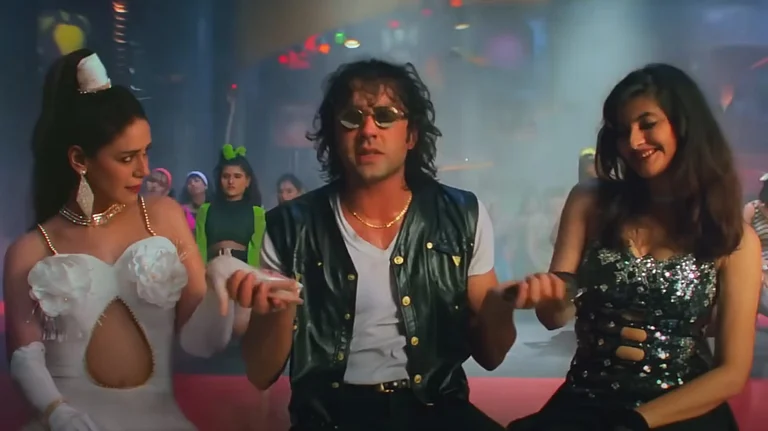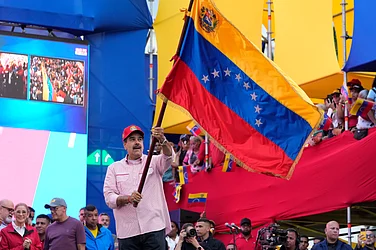The labelling of the ongoing polls in Chhattisgarh, Madhya Pradesh, Rajasthan, Telangana, and Mizoram as a semi-final match between the BJP and the Congress seems to be an overstatement, as the election verdicts in 2018 in these states did not have a linear impact on the Lok Sabha elections in 2019. In the 2013 assembly elections, the Congress lost four of the five states, and it recorded its worst defeat in the national elections in 2014. On the contrary, in 2018, it won three of the five provincial polls, raising hopes for a big comeback, but it once again received a huge drubbing at the hands of the saffron party in the 2019 elections.
Hence, the ‘nomenclating’ of elections in the five states as a semi-final competition between the two main national parties is full of naivety, as state and national hustings are tangentially different in the size of the electorate, political issues, local nuances, and interactive modes between politics and citizens. Assembly elections are political party contests—localised referendums on incumbency and governance variables like law and order, social justice initiatives and provincial programmes for targeted beneficiaries.
On the other hand, the fundamentals of national elections changed with the advent of the BJP in 2014, as it became presidential in nature and mandated the citizen’s ratification of Prime Minister Narendra Modi’s charismatic politics. His performance received high ratings from the electorate on political and socio-cultural dynamics like muscular nationalism, fast-paced economic empowerment and revival of Hinduism, which superseded the BJP’s party affiliation and electoral competitiveness. As a result, the last two general elections turned into personalised contests between ‘Modi versus Who’, and in the absence of a credible opposition face, he triumphed with overwhelming votes from carefully patronised welfare scheme beneficiaries.
The impact of five state elections on Indian politics is largely hyped by the media, but its political cruciality in the five-year Indian electoral cycle is more than other states and remains valid due to three key reasons.
One, it is the only round of hustings in which the BJP and the Congress exclusively cross swords with each other in three big Hindi heartland states that provide a clue about the political ideology and narrative that entices the voters. It does not provide a winning guarantee to the party that wins the maximum polls, but it certainly gives political traction to contest the next national elections as a strong contender. Two, its timing is consequential as it provides a platform to party alliances—the NDA and the INDIA alliance—to check the electoral waters for unity of purpose, poll chemistry and committed vote transferring mechanisms. Three, it gives an opportunity for alliances to test and market national issues that concern the aspirational society and may prove electorally decisive in the general elections. The Congress is raising issues of caste census and more reservations for OBCs, price rise, unemployment, and the alleged nexus between the BJP and the Adani group for scrutiny to ascertain its public resonance.
The saffron party, on the other hand, is checking the political efficacy of issues like corruption, dynasticism, and pseudo-secularism of the Congress in the mass mobilisation of majority votes. If these electoral dimensions click with the eligible voters and bring rich dividends, they can prominently figure in the national campaign agenda and manifestos of the BJP and the Congress in 2024.
A quick glance at the ongoing polls and electioneering by key parties in the five states reveals a mixed-bag political scenario. In the Hindi heartland, the saffron and the grand old party are in a dead-heat race, heavily relying on the flurry of freebies to win the elections with a slight advantage to the Congress in Chhattisgarh. Chief Minister Ashok Gehlot remains a favourite in Rajasthan due to the high popularity index, temporary ceasefire among the warring factions and several welfarist policies rolled out during his regime.
However, the deterioration in the law and order situation, skewed implementation of public policies, and widespread anti-incumbency sentiments against his MLAs throws a spanner in his quest to retain power. In Madhya Pradesh, the 18-year incumbency of Chief Minister Shivraj Singh Chouhan and his average administration record seems to have created long-term fatigue among the electorate. However, the failure of the Congress to manage the disruptive power tussle between its veteran leaders, Kamal Nath and Digvijaya Singh, coupled with not declaring a CM candidate has made it an even playing field for both parties. The Congress seems to be comfortably ahead in Chhattisgarh, as Chief Minister Bhupesh Baghel has created a distinct regional identity for the Congress that connects deeply with the state’s citizens. The BJP’s allegations of his involvement in multiple scams did not cut much ice nor did they tarnish his image, but the Mahadev betting app scandal and allegations of pay-outs reaching his doorstep may create a legitimacy crisis and hurdles in seeking yet another term.
The elections in Telangana and Mizoram are regional, but the victory of the party with the hand symbol in Karnataka seems to have created a surge in the southern state that promises to give the ruling Bharat Rashtra Samithi a run for its money. Mizoram witnessed a perceptible change in the system of party politics, from bipolar to multipolar, and the parties in the fray include the Mizo National Front, led by Chief Minister Zoramthanga, the Congress and the Zoram People’s Movement. The ruling party in the state is in a pole position, but a fractured mandate is distinctly possible.
The direct impact of state election verdicts on the national political spectrum may not be as substantial as anticipated, but it will allow a glimpse of the citizen’s choice between ‘the BJP and the Congress’, and the most likely majority endorsement scenario of their competing political ideologies in the Lok Sabha elections of 2024. Since provincial elections are mainly local contests based on area-specific issues, they have a limited influence in shaping the political discourse and agenda of the national hustings.
The reasons for the diminishing effect of state verdicts on national electoral politics are manifold, but it could be primarily due to General Elections turning into presidential-style contests that favour the primacy of personality cult politics. The ground zero in states are political kindergartens that nurture politicians and graduate them into national leaders, and maybe these elections can spring a psephological surprise by bringing forth a son of soil leader who can stand up to Modi’s domineering politics in the mother of all elections next year.
(Views expressed are personal)
(This appeared in the print as 'Polls Apart')
Praveen Rai is a political analyst at The Centre For The Study Of Developing Societies, Delhi






















